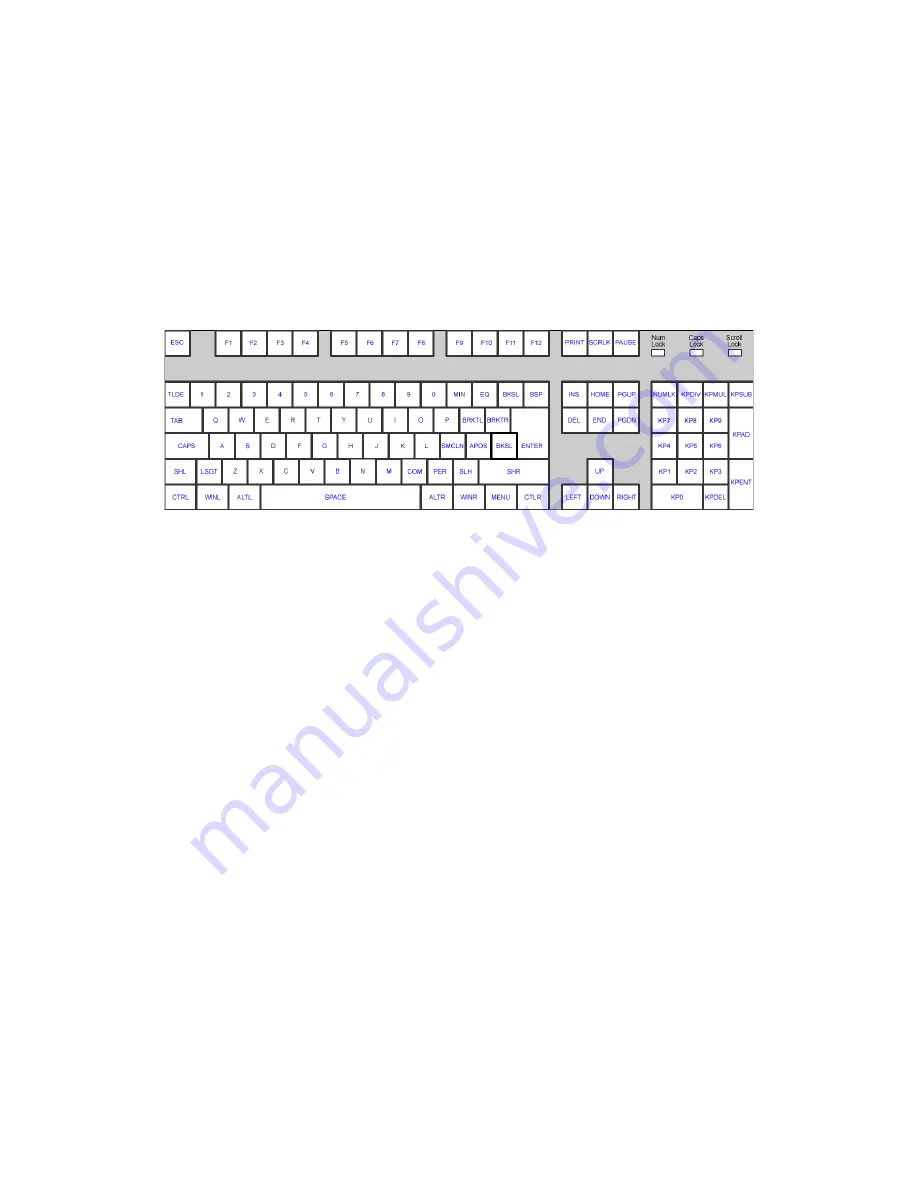
Prima IP User Manual Rev 1.5 2007
- -
55
Hot Keys:
Prima IP
can detect a special sequence of keystrokes when you type on your remote keyboard.
This special sequence is used to ask
Prima IP
to resynchronize the local and the remote mouse cursors in a
fast and convenient way. For example, it is faster to type CTLR–CTLR–Home on the keyboard than to use
the mouse and select a command into a menu. For compatibility with higher devices, this command is
divided in two parts called
Viewer Hot Keys
and
Mouse Resynchronization Key
.
Please be aware that the
Viewer Hot Keys
are transmitted to the KVM or server attached to the
Prima IP
. On
the contrary, the
Mouse Resynchronization Key
is eaten by the
Prima IP
. Thus, because the
Viewer Hot Keys
are transmitted, they must be as harmless as possible.
Viewer Hot Keys
such as NumLock-NumLock, Scrlk-
Scrlk or Ctrl-Ctrl can work because they produce generally no effect. On the contrary, the
Mouse
Resynchronization Key
can be anything since it is not transmitted by TKIP-101.
The
Hot Keys
can be configured to fit your needs. To find out the key positions on a standard keyboard,
please refer to the Keyboard Drawing.
Note 1
: The
Viewer Hot Keys
are transmitted to the KVM attached. Thus, they must be chosen so that they
don't interfere with the KVM hot keys.
Note 2:
If you are running the Java viewer on Mac OS, you might find that the default mouse
resynchronization sequence – CTLR-CTLR-Home - does not work. That is because the Right Control key on
Mac keyboard sends out a different key code as the PC keyboard. If that is the case, you might consider
configuring your
Hot Keys
as for example, CTLL-CTLL and S.
Viewer Hot Keys
: Enter here your preferred keystroke sequence that will serve as Viewer Hot Keys. By
default, this is
CTLR–CTLR,
in other words, two consecutive keystrokes of the
Right
Ctrl key (CTLR).
Please note that this is NOT the Left Control key (CTLL).
Mouse Resynchronize Key
: This is the only command supported by TKIP-101. It permits to synchronize
the local and the remote mouse cursors. By default, this is the
HOME
key. Thus, by default you have to hit
CTLR–CTLR–HOME
to synchronize the remote and the local mouse cursors.
Double-Byte Languages:
This feature makes
Prima IP
compatible with double-byte languages such as
Chinese, Japanese or Korean. When using the viewer, if the remote computer and/ or your local computer is
running a double-byte system, just type Alt and then Shift or Ctrl and then Shift
sequentially instead of
simultaneously
to produce the same effects as usually.
Enable Hot-Keys Transparent Mode:
Check this option if you are using
double-byte language
inputs on
the local and/or the remote computer to facilitate switching between single-byte and double-byte inputs.
Leave this option disabled if you do not use any double-byte language.
















































